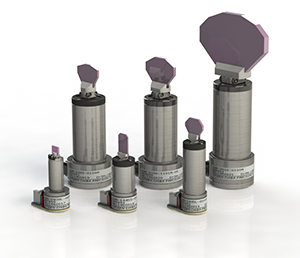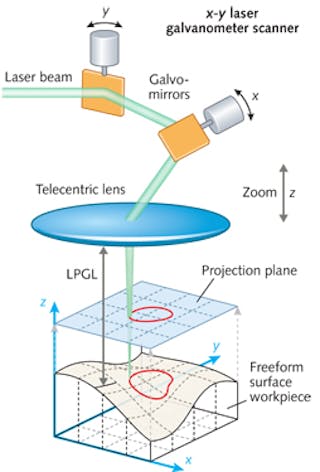How a Galvanometer Scanner Transforms Optical Applications for Scientists
How a Galvanometer Scanner Transforms Optical Applications for Scientists
Blog Article
Key Applications of a Galvanometer Scanner in Various Scientific Research Fields
Galvanometer scanners have become integral to numerous scientific study areas, offering boosted precision in applications ranging from biomedical imaging to ecological tracking. As we explore the complex applications of galvanometer scanners, it ends up being obvious that their impact expands much past simple technical abilities, elevating questions regarding their future capacity in arising research study areas.
Biomedical Imaging

In confocal microscopy, galvanometer scanners promote the purchase of photos with enhanced resolution and comparison, allowing researchers to visualize mobile parts in vivo. The capacity to swiftly capture numerous focal airplanes boosts the three-dimensional restoration of tissues, giving critical insights right into their style and function.

Furthermore, the quick scanning capabilities of galvanometer systems add to advancements in dynamic imaging applications, such as keeping track of mobile responses to stimulations. Hence, galvanometer scanners are important tools in the field of biomedical imaging, progressing research and clinical diagnostics via their precision and performance.
Product Processing
Precision in product processing is critical for accomplishing high-quality results in numerous industrial applications (galvanometer scanner). Galvanometer scanners play an important duty in enhancing this accuracy by allowing exact and fast motion control during the handling of products such as metals, porcelains, and polymers. These gadgets assist in strategies like laser cutting, welding, and engraving, which call for finely-tuned adjustments to make sure ideal results
In laser cutting, for example, galvanometer scanners enable for elaborate styles to be performed with high integrity, decreasing waste and boosting manufacturing effectiveness. The rapid movement capabilities make it possible for fast changes in the laser beam of light path, which is important for maintaining consistent reducing high quality throughout varying product thicknesses. In laser welding applications, the accuracy supplied by galvanometer scanners makes sure solid joints with very little thermal distortion, thus enhancing structural stability.
Additionally, the adaptability of galvanometer scanners to various laser types and wavelengths better expands their utility in material handling. Their capacity to function in tandem with innovative software application for real-time monitoring and control includes an added layer of refinement, enabling producers to achieve specific specs tailored to particular applications. Hence, galvanometer scanners are crucial beforehand the abilities of material handling modern technologies.
Optical Characterization
In the realm of optical characterization, the duty of galvanometer scanners becomes progressively substantial as they facilitate the evaluation of numerous optical residential properties with high accuracy. These devices enable exact control of laser light beams, allowing scientists to methodically probe materials at several angles and regularities. This capability is important for identifying the refractive index, absorption coefficient, and spreading residential or commercial properties of varied products.
Galvanometer scanners are specifically effective in techniques such as optical coherence tomography (OCT) and laser-induced fluorescence (LIF), where rapid scanning is crucial. By achieving high-speed modulation of the laser setting, galvanometer scanners improve the temporal resolution of these techniques, more bring about enhanced imaging and analysis. Furthermore, they allow the expedition of complex interactions in between light and matter, which is essential for recognizing material habits under numerous conditions.
Furthermore, the integration of galvanometer scanners with spectroscopic techniques expands their utility, permitting comprehensive spectral evaluation across a variety of wavelengths. This flexibility makes them essential devices in areas such as products science, biomedical study, and nanotechnology, where comprehensive optical characterization is vital for progressing knowledge and development.

Laser Micromachining
The introduction of laser micromachining has transformed manufacturing procedures, allowing the development of intricate structures with unrivaled precision. This technique utilizes high-intensity laser beam of lights to precisely eliminate product from a substratum, making it possible to fabricate micro-scale elements that are vital in different sectors. The application of galvanometer scanners in laser micromachining improves the efficiency and accuracy of this procedure by enabling rapid and accurate beam of light positioning.
Galvanometer scanners promote the dynamic control of laser beams, allowing intricate patterns to be engraved or reduced with high integrity. Their fast feedback times and high-resolution abilities permit the adjustment of laser pulses, which is crucial for attaining the desired product residential or commercial properties and surface area finishes. This modern technology is especially helpful in industries such as electronic devices, where the miniaturization of components is essential for performance improvement.
In addition, laser micromachining get redirected here is progressively being employed in the medical field for manufacturing precision instruments and implants. The combination of laser innovation and galvanometer scanning not just enhances manufacturing operations however likewise minimizes waste and boosts overall product application, making it a lasting selection for contemporary production difficulties.
Ecological Surveillance
Ecological monitoring has actually become significantly important in assessing and managing the health and wellness of ecosystems and city settings. The combination of galvanometer scanners in this area enables exact, rapid, and effective data collection, facilitating far better decision-making procedures. These scanners are adept at guiding laser light beams or sensing units throughout different terrains, permitting high-resolution mapping of ecological specifications such as air top quality, dirt structure, and water pollution.
In air high quality monitoring, galvanometer scanners can be employed to examine particulate issue and gaseous contaminants, giving real-time information that informs public health initiatives. For water quality analyses, these scanners can assist in detecting contaminants and measuring physical specifications, thus guaranteeing compliance with environmental policies. In remote noticing applications, galvanometer scanners boost the capacity of satellite and drone systems to record in-depth images and information of substantial areas, determining anthropogenic impacts and eco-friendly adjustments.
The versatility and accuracy of galvanometer scanners make them crucial devices in environmental monitoring, contributing significantly to sustainable advancement efforts and the security of all-natural sources. As the need for effective ecological monitoring expands, the duty of these advanced tools will most other certainly expand even more.
Final Thought
In recap, galvanometer scanners act as crucial tools throughout several clinical research study domains. Their application in biomedical imaging improves the accuracy of techniques essential for cellular visualization and diagnostics. In product processing, these scanners help with innovative laser cutting and welding procedures, ensuring minimal distortion. Their role in environmental surveillance emphasizes the relevance of exact data collection in dealing with public health and wellness and ecological obstacles. The convenience and performance of galvanometer scanners remain to drive improvements in these essential areas.
In laser welding applications, the precision supplied by galvanometer scanners makes certain solid joints with marginal thermal distortion, therefore boosting architectural honesty.
Additionally, the flexibility of galvanometer scanners to various laser types and wavelengths even more widens their utility in product handling. By attaining high-speed inflection of the laser placement, galvanometer scanners improve the temporal resolution of these methods, leading to boosted imaging and evaluation. The application of galvanometer scanners in laser micromachining boosts the effectiveness and accuracy of this procedure by allowing rapid and precise beam of light positioning.
Galvanometer scanners facilitate the dynamic control of laser beams, enabling complicated patterns to be engraved or cut with high integrity.
Report this page